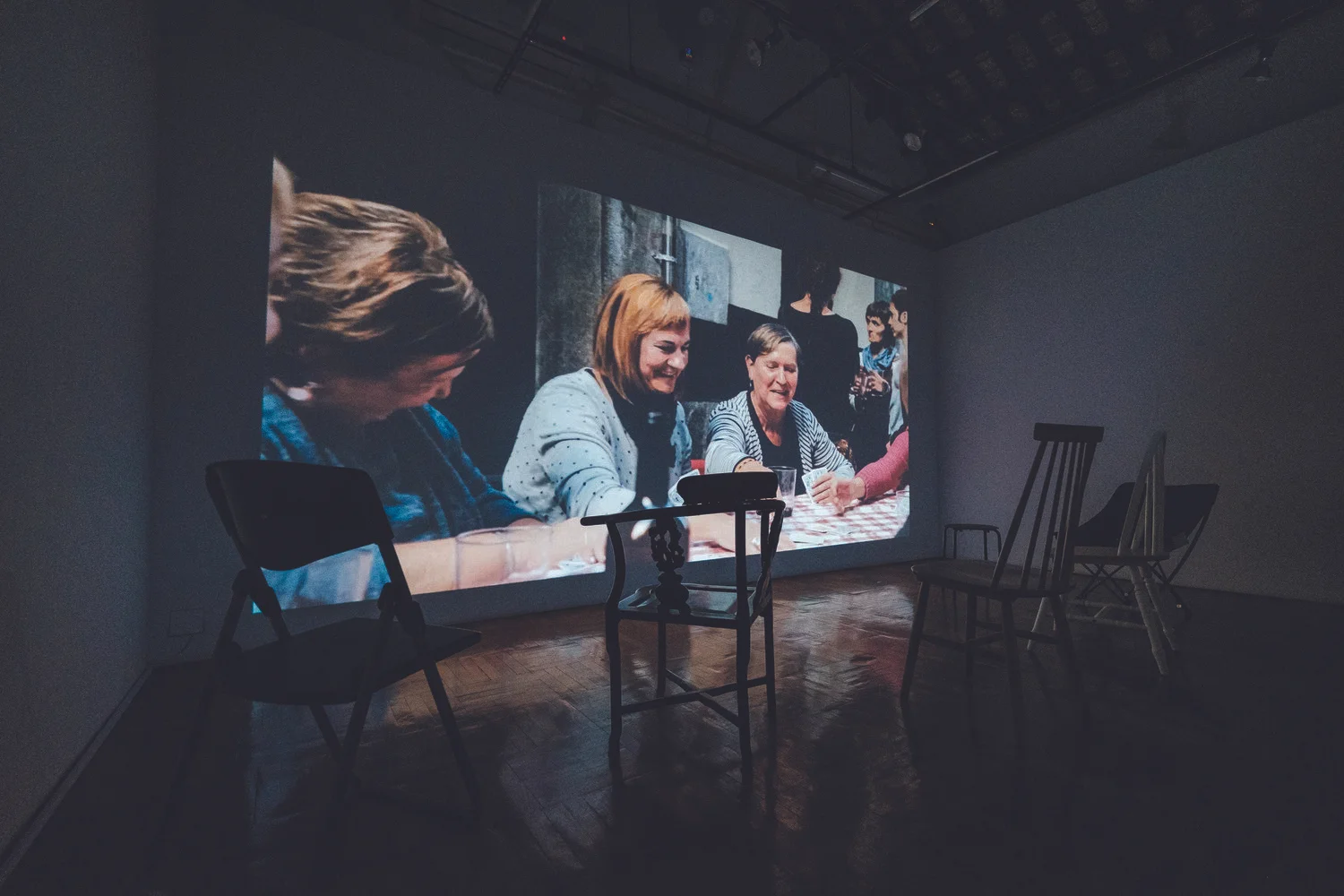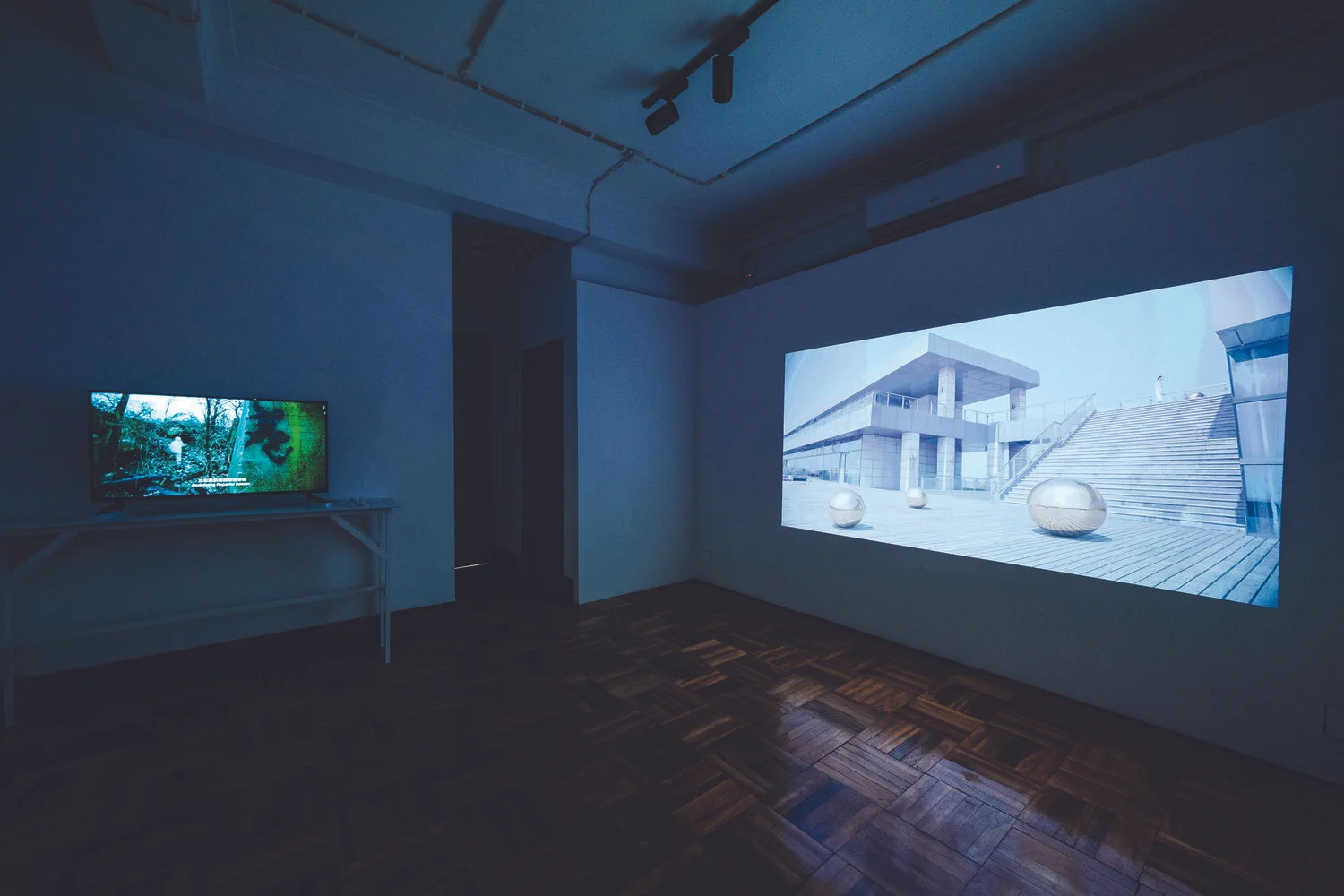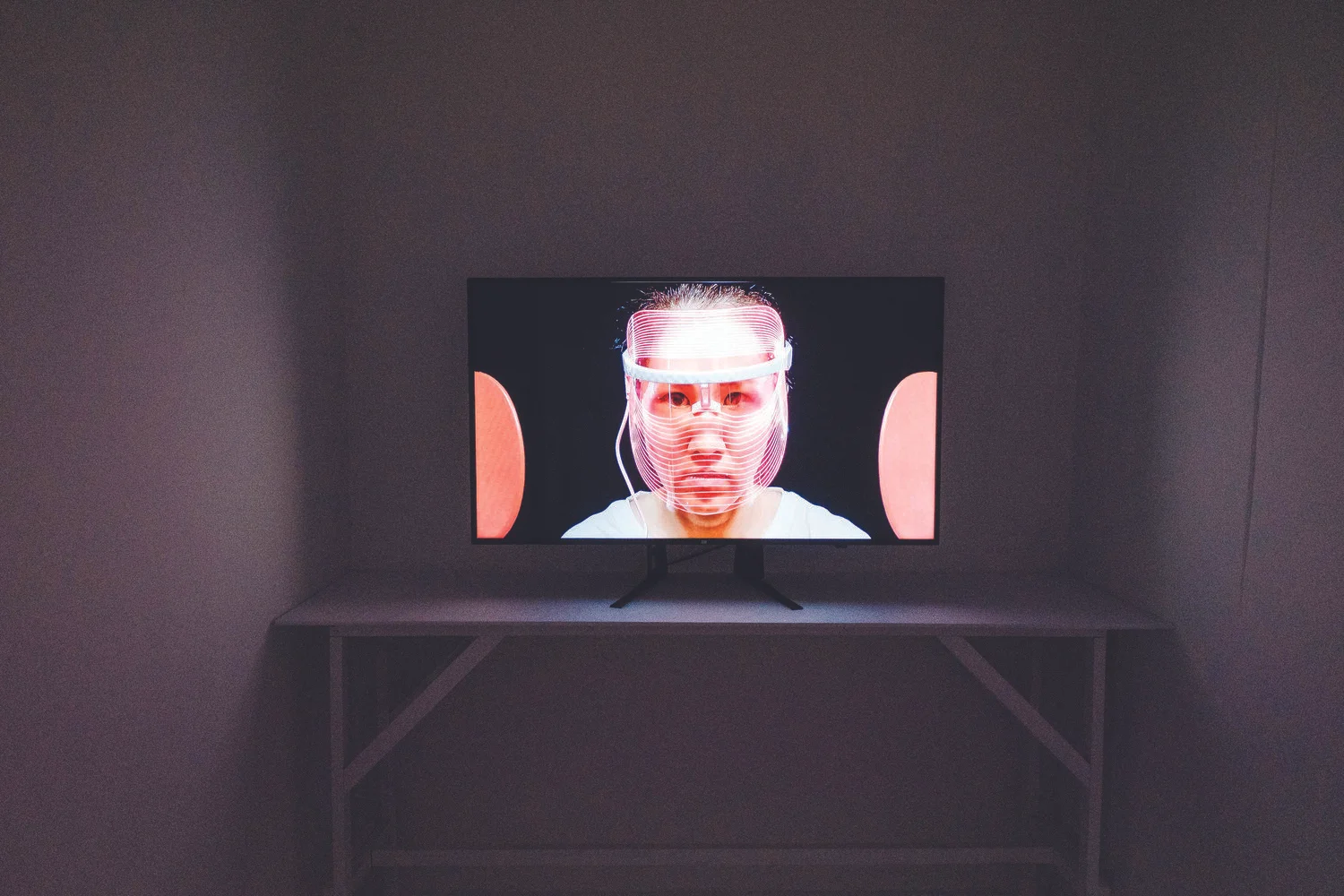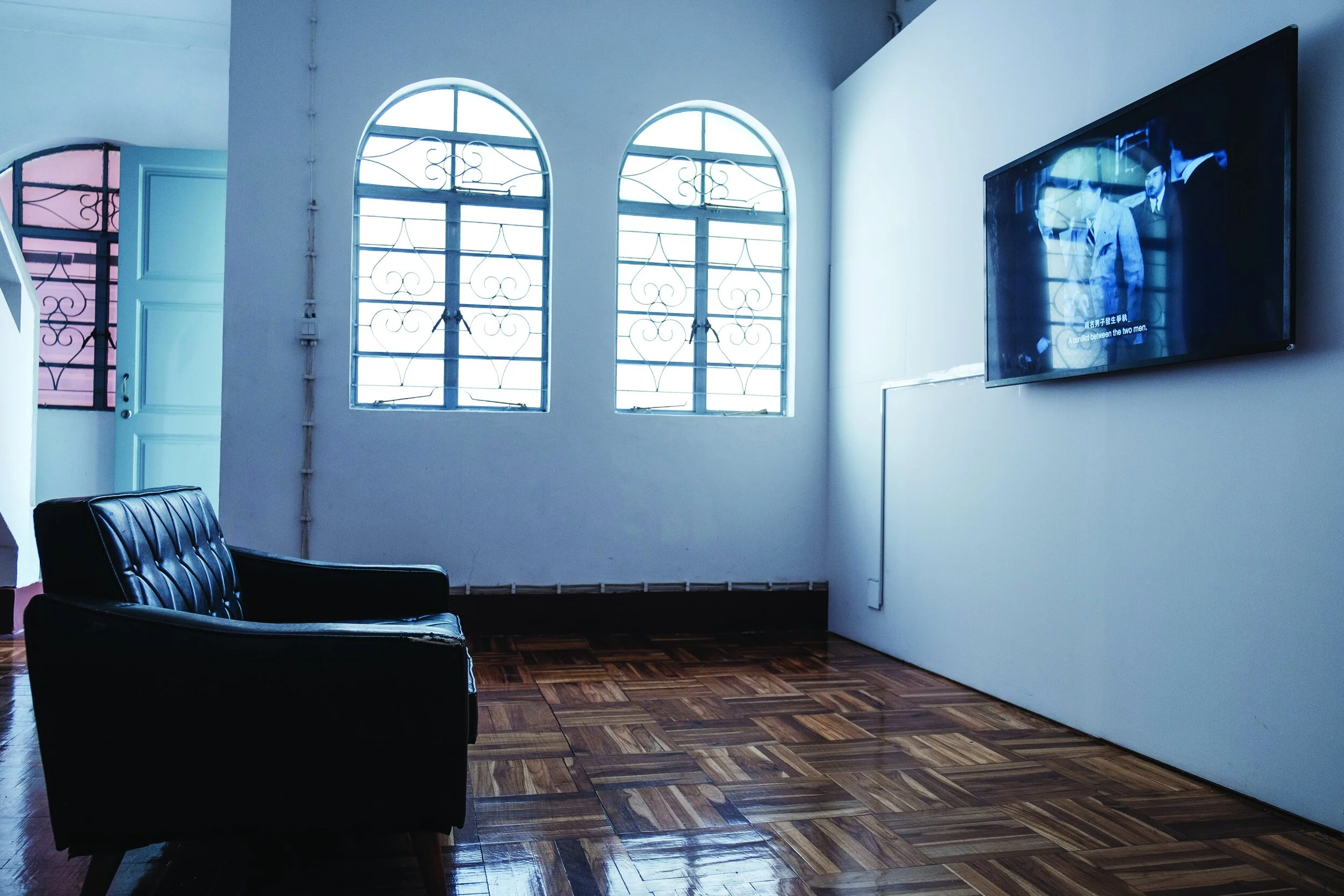臨界:身體與屏幕之間
On the Edge - Body and Screen
中國澳門 Macau, China, 2022
澳門實驗錄像活動
Macau Experimental Video Festival
策展人 Curators:Fernando Pérez, 林小雯 Sio Man Lam
藝術家 Artists: Itziar Barrio (Spain/USA), 劉艾真Jen Liu (USA), Sra Polaroiska (Spain), Liza Sylvestre (USA)
展覽日期 Exhibition Period:2022. 2. 15 - 3. 14
展覽地點 Venue: 澳門望廈山房(綠屋仔)Mong-Ha Villas (Vivendas Verdes), Macau
主辦單位 Organizer: 澳門牛房倉庫 Ox Warehouse, Macau
策展人言 Curatorial Statement
本屆澳門實驗錄像活動以"臨界:身體與屏幕之間"為題,呈現中心之外的身體影像與敘事。邊緣成為一種思想與選擇,臨界作為行動與方法。從藝術反思到社會行動,作品透過截然不同、卻相互共振的影像實驗與敘事,挖掘身體的自由與潛藏的可能。
參展藝術家以非統一的影像與身體的他者的觀念,或者更確切地說是從"他者的身體"的角度來創作。其作品向觀眾展示了不同的視角,當中的身體和影像通過各種在場(或缺席),遊離在臨界的頂點之上、在影像創作的邊緣、在虛構與現實之間。
劉艾真的系列錄像作品《粉紅肉渣的凱薩密碼》結合了真人表演與三維動畫,假想出四種方式,讓未來社會的女性工人得以借助凱薩密碼的加密方式及基因工程技術來傳遞重要的運動文本與信息。在這個虛擬的世界當中,女性工人們的身體由於電子產業的工作而受到危害,但這些勞動者同樣可以反過來透過基因工程等技術來進行秘密交流,抵抗並倡議行動。
同樣有著對勞動者身體的關注,質問社會經濟和政治條件對身體的塑造,Itziar Barrio的作品《沒有什麼好害怕的。他們為彼此瘋狂》聚焦表演藝術行業的"創意勞工",她讓演員在鏡頭前參與試鏡並競逐演出機會,令表演者致力建構的身體與表演出現裂痕。這項實驗演出參考了Stanley Milgram 著名的心理學研究"服從的危險"。該實驗發現大多數人為了服從權威,會選擇違背自己的良心;Itziar則扣問演員如何在主流的身體與影像敘事之外,尋求人的主體性。
Liza Sylvestre的作品《植入字幕:二十世紀快車》借用了1934年霍華德·霍克斯執導的黑白電影《二十世紀快車》,其時的電影尚未有字幕的概念。藝術家以個人的聽障經驗出發,為電影加上字幕,表達她對作品的理解/無法理解,分析演員的肢體與聲音表演,男女角色的力量較勁,乃至聽不見和不被聽見的孤獨,這些讀白/彈幕揭示了大眾媒體與社會制度如何塑造出僅為"健全者"而設的世界,將殘障人士等少數群體排除在外。
Sra Polaroiska 是由Alaitz Arenzana與Maria Ibarretxe組成的藝術家組合,其展出作品《Andrekale》帶著女性主義的視角,打造理想而自由的公共空間。影像追溯了一條街道的傳說與命名,拍攝女性行走、聚集在這条曾經名為女人街的街道之上,自由地舉杯、享樂、歌唱。另一作品《沒有甚麼比變老更當代》則捕捉了一班婆婆們穿戴著華衣,搖曳著身體,享受著舞蹈的樂趣,藝術家以唯美的影像刻劃歲月在女性身上留下的痕跡,向觀者傳達,沒有甚麼比變老更為當代。
在這裡展示的作品中,影像藝術、表演性、圖像的不同層次和時間性具有根深蒂固的身體政治意義。這些與我們同時代、且生活在日益平行的世界中的藝術家,每個人都有著自身的社會文化背景,並從她們的藝術語境中試驗新的符碼;她們拓展了通過影像展示身體的方式,創造出共享的框架以回應共有的命題,重新定義了前所未有的形式、時間性和多樣化的美學,促使我們發現新的路徑和無限的軌跡。
這些多元的身體和影像,動搖和瓦解著種種針對性別、年齡、身份、族群、階層的成見與束縛,帶來影像的解放,同時亦是身體的解放——直叫那些在屏幕前變得木訥的身體,亦要蠢蠢欲動。
Titled "On the Edge - Body and Screen", this year's Macau Experimental Video Festival (EXiM) presents moving images and narratives of the body beyond the mainstream. The edge becomes a thought and a choice. Embracing the edge becomes an action and a method.
Selected works in the Festival wander between artistic reflection and social action, exploring the freedom and hidden possibilities of the body through different but mutually resonant video experiments and narratives. Participating artists created their works with non-uniformed ideas of image and body’s otherness, or rather from the perspective of the "other bodies". The works show the viewers the different perspectives these artists offer, where the body and the image, via the various presences (or absences), travel around the vertex, on the edge of moving images and the frontier between fiction and reality.
Combining real-life performance with 3D animations, Jen Liu's video series Pink Slime Caesar Shift envisions four proposals, in which female factory workers of future society can use Caesar Cipher based encryption, the production and distribution of Pink Slime (a synthetic meat) to transmit important movement documents and information. In this speculative future, the bodies of female workers are endangered by their work in the electronics industry. However, these workers can also create space of resistance and activism by engaging in secret communications and networking through genetic engineering technology.
With similar concerns for the body of the labourers and questions about how the body is shaped by socioeconomic and political conditions, Itziar Barrio's work There Is Nothing to Be Afraid of. They are Crazy About Each Other focuses on the "creative labour" of the performing arts industry. The work features actors auditioning and competing for performances in front of the camera, thereby creating a rift between the body and performance the performers are committed to developing. This experimental work makes reference to Stanley Milgram's famous psychological study The Perils of Obedience. That experiment found that most people would choose to comply with the authority in violation of their conscience; Itziar asks actors how to seek the subjectivity of mankind beyond the body and image narratives of the mainstream.
Liza Sylvestre's work Captioned: Twentieth Century is based on the black and white film Twentieth Century directed by Howard Hawks in 1934. At that time, the concept of subtitles did not exist in the movie world. Based on her personal experience of hearing impairment, the artist creates subtitles for the film to express what she understands/does not understand about the film. She analyzes the actors' physical and vocal performances, the power rivalry between male and female characters, and even the loneliness of what is inaudible and overlooked. These subtitles reveal how the mass media and social institutions have only created a world for “the able-bodied” but left out the minorities like the disabled.
Sra Polaroiska is an artist duo composed of Alaitz Arenzana and Maria Ibarretxe. Their video Andrekale adopts a feminist perspective and constructs an ideal and free public space. The video recaps the folklore and naming of a street and shoots women walking and gathering on the street, which was once named as "Andrekale"(Women’s Street). The women toast, play around, and sing freely. Meanwhile, another work There Is Nothing Is More Modern Than Growing Old captures a group of grandly-dressed old ladies swaying their bodies and enjoying the fun of dancing. The artists depict the ageing of women through aesthetically-crafted images, conveying to viewers that nothing is more modern than getting older.
In the works exhibited here, video art, performativity, different layers of images and temporalities have deep-rooted corporal politics. These contemporary artists of our era and our ever more parallel world, each of them with their own background, experiment with new codes from their artistic contexts. They multiply the ways in which bodies can be shown through image and address common themes within the framework of an invented common ground to redefine a new form, temporality, and diverse aesthetics, forcing us to discover new paths and infinite limitless trajectories.
All together, this diversity of bodies and works rocks and disintegrates all kinds of prejudices and restraints about gender, age, identity, ethnicity and social class, resulting in the liberation of body and also moving image — the numb bodies in front of the screen are also ready to move.
媒體報導 Press:








